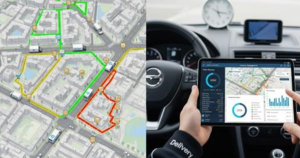Why Ad Tracking Should Be a Top Priority for Every Marketing Agency in 2025
Marketing leaders have a lot to juggle in 2025. Budgets are tight, teams are lean, and platforms change every week. That is exactly why ad tracking for agencies needs to move from nice to have to must have. When every click costs money, you cannot guess which channels drive sales. You need clean data, privacy-safe workflows, and clear feedback loops that help your team act fast.
Good tracking does not mean being creepy or breaking the rules. It means you collect only what you need, with consent, and you connect the dots between an ad and a result. When you do this well, you spend smarter, report with confidence, and your clients stick around because they can see what worked and why. So yes, ad tech keeps shifting. But the agencies that build solid tracking now will win more often and waste less.
Why Ad Tracking Matters In 2025
Privacy shifts you must plan for
The browser and mobile world look very different from a few years ago. Safari blocks all third-party cookies by default through Intelligent Tracking Prevention. Firefox now uses Total Cookie Protection by default, which isolates cookies per site so cross-site tracking becomes far harder. And while Chrome once planned to drop third-party cookies, Google chose a user choice path instead, with regulators in the United Kingdom noting Google’s move away from deprecating cookies and a separate prompt. That means third-party cookies still exist in Chrome today, even as Google continues developing Privacy Sandbox. These shifts change how signals flow and why your plan can not rely on a single browser behavior anymore. (, ,
Measurement is not optional, but it must be compliant
Rules tightened, too. In the European Economic Area, Google’s Consent Mode v2 became the standard for preserving ad features when users grant consent, and it requires new consent signals to keep remarketing and some measurement working. On iOS, App Tracking Transparency still forces apps to ask before tracking, and authorities are enforcing how platforms implement it, as seen in France in 2025. The bottom line is clear. Agencies need consent-aware tagging and honest disclosures, or they risk both data loss and legal trouble. (,
A lot of people ask if this makes measurement impossible. It does not. It just means your toolkit must mix first-party data, server-side methods, conversion APIs, and privacy-safe modeling. When you combine those pieces well, you get a stable signal even when a browser blocks something.
Ad Tracking For Agencies
How it protects every dollar you spend
Clients do not pay for impressions. They pay for outcomes. With ad tracking for agencies set up the right way, you can link spend to revenue, not just clicks to visits. When a new campaign launches, you spot waste in days, not months. When organic and paid both touch a sale, you give each channel fair credit. And when the board asks what they got for last quarter’s media, you answer with simple charts and one story everyone trusts. That is how tracking turns from a cost to a profit tool.
The stack that keeps working when the web changes
A resilient stack does a few things well. It sends consent signals to every platform that needs them. It captures conversions even when cookies are limited. It enriches events with first-party data the user shared, like an email on a checkout, while hashing and handling it with care. It also feeds those conversions back to the ad platforms so bidding gets smarter over time. This stack is not about buying more tools. It is about wiring the ones you have the right way and filling the gaps with modern methods.
When you need a single place to monitor and scale multi-channel tracking, tools built for agencies can help. Platforms that centralize attribution and integrate across sources can reduce busywork, cut errors, and make reporting faster. Solutions built for teams that manage many brands are especially helpful here, like ad tracking for agencies, which focus on cross-channel transparency and control without piling on heavy code you do not need.
So the goal is simple. Get the signals. Make them trustworthy. Share them where they lift performance. Do that, and your creative, your bids, and your testing get smarter every week.
What Great Tracking Looks Like In 2025
First party data and consent signals as the backbone
Start with consent, because it controls what you can legally and ethically use. If you run media that reaches the EEA or the UK, implement Consent Mode v2 so your tags adapt when a user accepts or declines. The new parameters pass the right consent choices to Google so measurement and remarketing features continue where allowed. This reduces data loss and protects the audience building you depend on.
Next, turn your first party data into better measurement. When a buyer gives you an email at purchase, enhanced conversions in Google Ads let you hash that data and send it back securely. This boosts match rates and makes your reporting and bidding more accurate without exposing raw personal data. It is a simple lift with a big upside for both lead gen and e-commerce.
Server side tagging and conversion APIs for durable signals
Server-side tagging gives you more control over the data you collect and share. Instead of dozens of scripts firing in the browser, you route events through your server. This can improve page speed, reduce data leakage, and make it easier to enforce consent rules. It also makes signals more resilient when browsers block third-party scripts or when ad blockers get aggressive. Google’s own documentation highlights privacy control, performance, and data quality as core reasons to adopt server-side tagging.
For paid social, add a direct line with a conversion API. Meta’s Conversions API lets you send events from your server, not only from a browser pixel. That means fewer lost conversions, better visibility into lower funnel actions, and stronger optimization when paired with consent logic. Meta recommends a redundant setup, browser plus server, and explains how to deduplicate so you do not double-count. This is a proven way to keep performance steady as browsers evolve.
Modeled data that fills the gaps, not fakes the truth
Even with consent and server-side in place, you will still see gaps. That is normal in a privacy-first web. This is where modeling helps. Google Analytics 4 can model user behavior and conversions when consent is denied, using the behavior of similar users who did consent. The point is not to invent wins. It is to estimate trends so your reports stay useful and your testing does not stall when part of the audience cannot be tracked at the user level. When you combine modeled reporting with enhanced conversions, you get both coverage and accuracy where it matters.
As your stack matures, keep an eye on small product changes that make setup easier. For example, Google simplified enhanced conversions configuration in Tag Manager in 2025, moving user-provided data settings to a cleaner flow. These updates do not change the principles above, but they remove the friction your team felt in earlier versions.
Turning Tracking Into A Growth Habit
Make it daily, not yearly
Great tracking is not a one-time project. It is a habit. Add a weekly check to compare platform-reported conversions with your back end. Review consent rates by region so you know where banners or copy need tweaks. Watch the site speed after any tag change. And keep a change log so you can tie performance swings to actual edits, not hunches. Agencies that do this week after week catch problems early and scale winners faster.
Prove value in plain language
Clients do not want dashboards they cannot explain. They want a clear link between dollars in and dollars out. With a complete setup, you can show how one creative and one audience drove a lift in a specific conversion, and how that learning rolled into the next sprint. You can also show how compliant practices, like consent mode and server-side tagging, protect their brand while still improving results. That builds trust, which is the real moat in a crowded market.
So here is the call to action. Make ad tracking for agencies your top priority this year. Build on consent. Shift to more first-party and server-side signals. Feed conversions back to the platforms the right way. Use modeling to fill gaps without overpromising. Do this with simple tools and steady routines, and your team will spend less time guessing and more time growing accounts.
References for key facts used above include Safari’s full third party cookie blocking and Intelligent Tracking Prevention, Mozilla’s Total Cookie Protection by default, the UK regulator’s updates on Chrome not deprecating third party cookies and dropping a separate cookie prompt, Google’s Consent Mode v2 requirements, GA4 modeling with consent mode, Meta Conversions API guidance, and Google’s documentation on server side tagging and enhanced conversions



